Introduction
Claude Monet (1840-1926) is recognized as one of the founders and leading figures of the Impressionist movement. Among his most famous works is the monumental series « The Water Lilies », which holds a central place in the history of art. Created during the last 31 years of his life, this series includes about 250 oil paintings depicting the pond with water lilies in his garden at Giverny. Monet devoted more than three decades to it, tirelessly exploring the variations of light and seasons on the surface of the water. This artistic obsession gave rise to true masterpieces of Impressionism, now regarded as a pinnacle of his work and a major contribution to modern painting.
Monet himself placed immense importance on his garden in Giverny, the source of inspiration for the Water Lilies. He once declared that "my greatest masterpiece is my garden", testifying to the fusion between his art and nature. The Water Lilies paintings, with their changing reflections and subtle colors, are thus much more than mere floral landscapes: they reflect Monet's obsession with the capture of the fleeting moment, light, and atmosphere, which makes the Water Lilies a series of paramount importance in 20th-century art.
In this article, we offer you a comprehensive analysis of Claude Monet's Water Lilies. We will review the main paintings of the series (such as The Water Lily Pond, Blue Water Lilies, Black Water Lilies, Water Lilies in Bloom, Water Lilies at Sunset, Water Lilies in the Morning or even The Japanese Bridge). We will also discuss the technical characteristics of these works (dates, dimensions, techniques used), their current location and the number of existing paintings, not to mention an overview of the art market (auction sales, record prices, value of reproductions). Finally, we will explore why Monet painted the Water Lilies and how this series contributed to making him one of the most famous Impressionist painters in the world.
Let's dive into the poetic universe of Monet's water lilies, true mirrors of water capturing the light and dreams of a genius artist.
Presentation and analysis of the main works of the series Water Lilies
Water Lilies
Water Lilies is an iconic canvas where Monet represents his pond of water lilies in its entirety, often without any visible horizon line. The viewer is immersed at water level, facing the surface of the pond covered with round leaves and floating white or pink flowers. Monet uses a bold framing here: the sky and banks disappear, revealing only the reflection of the sky in the water and the aquatic plants, giving the scene an almost abstract appearance. This innovative composition, eliminating usual reference points, creates the impression of a window open to infinity where the water becomes a mirror of the world.
Dating from 1917-1919, Water Lilies belongs to the cycle of “Great Decorations” that Monet undertook after 1914 for his project of monumental panels intended for the Orangerie. According to Sotheby’s, this canvas – which notably belonged to the American collector Ray Stark – is said to be one of the most successful in the series. The tones are harmonious, with soft greens mixed with the blues of the reflected sky, and Monet's brushwork is particularly free and energetic. The whole conveys a serenity that is almost meditative, reflecting the contemplative state of the painter in front of his pond.
Several versions of the Water Lily Pond exist, Monet having revisited this motif many times under different lights. One of them gained great notoriety in the art market: in 2008, a Water Lily Pond sold for nearly 41 million pounds at an auction in London. This considerable sum reflects the exceptional enthusiasm of collectors for the works in the Water Lilies series.
Blue Nymphéas
In Blue Water Lilies, Monet pushes pictorial experimentation very far. His brushwork is quick, freed from precise drawing, which makes the canvas appear almost abstract up close: the flowers and leaves dissolve into juxtaposed touches of color musee-orsay.fr. But from a distance, the whole recomposes into a harmonious aquatic landscape bathed in light. Monet plays with a cool palette – a range of blues, purples, and greens – to suggest a moment of calm in the shade, perhaps under the morning sky or on a slightly overcast day. The atmosphere that emerges is peaceful and contemplative.
Today, Blue Nymphéas is exhibited at the Musée d’Orsay in Paris, where it attracts thousands of visitors admiring the modernity of this composition. This work was painted during World War I, at a time when Monet, aging, devoted himself almost exclusively to his water garden. It embodies the synthesis of Impressionism and the beginnings of abstract art, later inspiring many 20th-century artists with its stylistic freedom.

Water Lilies “Black”
The term Nymphéas noirs does not strictly refer to a painting by Monet, but it echoes two realities related to the world of the Nymphéas. On one hand, it refers to the late works of Monet, when the painter, suffering from cataracts, perceived colors in an altered way. Indeed, Monet painted many Nymphéas while his vision was impaired, which sometimes gave his canvases darker tones, with dominants of reddish browns and opaque yellows. Some of these paintings from the late 1910s to early 1920s present a more twilight atmosphere, which could be described as more “dark” compared to the azure blue or soft pink versions of other Nymphéas. However, Monet never explicitly titled any of his canvases Nymphéas noirs.
On the other hand, « Nymphéas noirs » is the title of a bestselling novel by the writer Michel Bussi, published in 2011. This highly awarded thriller takes place in Giverny – Monet's village – and uses the world of the Nymphéas as the backdrop for a police intrigue. The choice of this title by the author highlights the mysterious and enchanting imagery associated with Monet's water lilies. It illustrates the cultural impact of these works well beyond the realm of painting: the Nymphéas inspire not only artists but also writers and the general public, feeding an imagination where Monet's pond becomes the theater of secrets and mysteries.
In summary, if Claude Monet's Water Lilies primarily evoke canvases bathed in light, the term Black Water Lilies reminds us that some versions can adopt a darker tone, and that Monet's legacy extends to contemporary literature. This attests to the evocative power of his work, capable of eliciting emotions and narratives in varied universes.
Water Lilies in Bloom
Water Lilies in Bloom (1914-1917) is a particularly colorful variant of the series, centered on the blossoming of flowers on the surface of the water. Monet depicts pink and white water lilies in full bloom, bathing in bright light. The reflections of the sky and surrounding vegetation tint the water with shades ranging from sky blue to emerald green, with touches of sunny yellow suggesting the rays of the sun. The overall effect is that of a bright and vibrant scene, capturing the magical moment when the water flowers open under the sun.
In terms of composition, Water Lilies in Bloom often adopts a rectangular format that is wider than it is tall (about 160 × 180 cm for a famous version). Monet arranges the groups of flowers in a balanced manner, creating a sort of visual rhythm across the canvas. The variety of brush strokes – sometimes light to suggest a blurred reflection, sometimes more pronounced to define a petal – brings the surface of the water to life. The gaze navigates from flower to flower, as if rocked by the imperceptible movement of the water.
A painting titled Water Lilies in Bloom has entered history for having reached a record price on the art market. From the former Rockefeller collection, it was sold at Christie’s in New York in 2018 for approximately 84.7 million dollars, setting a peak for a work by Monet. This exceptional amount reflects the importance of this painting, considered one of the most accomplished in the Water Lilies cycle. Now preserved in a private collection following this sale, the work continues to fascinate with its colorful joy and technical mastery, embodying the culmination of Monet's vision of his water garden.
Water Lilies at Sunset
Monet also explored the effects of twilight on his pond in certain paintings often referred to as Water Lilies at Sunset. These paintings stand out for their warmer tones – oranges, deep reds, purples – evoking the fiery sky of a summer evening reflecting on the surface of the water. The water lilies, bathed in this golden light of late day, take on delicate pastel shades and stand out against a background of water darkened by the growing shadow. The atmosphere is that of a peaceful end of day, where nature is tinged with warm tones before nightfall.
One of the first notable versions dates from 1907, titled Water Lilies at Sunset, now preserved at the National Gallery in London. Of modest size (73 × 93 cm), it captures the shimmering of the setting sky on the pond with great delicacy. Monet later revisited this theme in his large decorative panels. At the Orangerie Museum in Paris, one of the eight monumental compositions is titled Setting Sun: it is a vast panel (~2 m × 6 m) created between 1914 and 1926, where the artist deploys a symphony of reds and golds on the canvas. This enveloping work places the viewer at the heart of a sunset over the water, with diffuse reflections and silhouettes of water lilies drowned in color.
In Water Lilies at Sunset, Monet demonstrates his ability to capture the changing moods of the day. The contrast is striking with Water Lilies in the Morning (see below): here, everything is warmth and vibration, the contrasts are more pronounced, and the emotion conveyed is that of a moment both majestic and ephemeral. These evening canvases confirm the extent of Monet's palette and his talent for painting not only what he sees but also the sensation felt in the face of nature at a specific moment.
Water Lilies in the Morning
Opposite the setting sun, Monet also painted the tranquility of clear mornings on his pond, offering serene canvases with fresh colors. Water Lilies in the Morning (sometimes called Morning with Water Lilies) generally features soft pastel tones – sky blues, pale pinks, tender greens – evoking the soft light of early morning filtering through the still humid atmosphere. The water of the pond reflects a clear sky, leaning towards milky blue, and the water lily flowers are just beginning to open for the day. The whole scene exudes a sense of morning calm, of nature awakening in silence.

In the large panels of the Orangerie, Monet dedicated compositions to these morning effects. For example, a panel titled Morning (1914-1926) occupies a prime spot in the first room of the museum. Measuring approximately 200 × 600 cm, it envelops the viewer in an idyllic morning scene. The colors are deliberately muted, almost diaphanous, conveying the humidity of dawn and the still weak light of the low sun. Light clouds can be discerned in the reflection of the sky, giving the painting a vaporous depth.
Monet, as a painter of light, found in these morning hours a favorite subject to capture the birth of day. The Water Lilies in the Morning thus possess an intimate and soothing atmosphere. The viewer almost feels the freshness of the air and the distant song of birds through the canvas. This morning serenity contrasts with the rich colors of the setting sun or the brilliance of the Water Lilies in Bloom, showing how Monet varied his motif of water lilies at all hours of the day to explore its infinite variations.
The Japanese Bridge
In the paintings of Japanese Bridge, Monet combines the vibrant green of the surrounding vegetation with the reflection of the sky in the water, creating a true symphony of greens, yellows, and touches of pink/purple flowers. The bridge itself, often painted in green, stands out in an elegant curve in the middle of the composition. Under the bridge, the pond teems with water lilies and reflects the clusters of flowers and trees in the garden. The surface of the water thus becomes a mirror that merges reality and its reflection, a theme dear to Monet.
The late versions of the Japanese Bridge (1918-1924) surprise with their almost expressionist character. At this time, Monet, suffering from eye problems, applies color in thick, swirling strokes; the bridge is barely discernible amidst lush vegetation in yellow-green and purple hues (as seen in the image above). These bold canvases partly herald abstraction through their freedom of form and the total immersion of the viewer in nature. Other, older versions (around 1899-1900) show the Japanese bridge in a more smooth and clear atmosphere, with silhouettes of poplars in the background and calm water where the water lilies distinctly float.
The Japanese Bridge symbolizes the meeting of East and West in Monet's art: inspired by Japanese prints (Monet collected ukiyo-e prints), he integrated it into his Norman garden and immortalized it in painting. This motif contributed to making the Water Lilies a varied ensemble – beyond just views of the pond – and it remains one of the most appreciated subjects by visitors, particularly at the Marmottan Museum in Paris, which has several Japanese Bridges by Monet.
Technical characteristics of the Water Lilies (dates, dimensions, techniques)
Painting technique: All the works in the series The Water Lilies are created in oil on canvas, the preferred technique of Monet and the Impressionists. Monet applied his paint in successive layers, often quickly to capture an immediate visual impression. His brushstroke is broad, vibrant, and fluid, favoring effects of color and light rather than precise drawing of forms. He worked outdoors for sketches, then finalized many canvases in his studio. The Water Lilies also illustrate the evolution of his technique: a very readable and detailed facture in the 1890s, moving towards a more free and gestural pictorial writing in the 1910s-1920s, sometimes on the verge of abstraction. Monet did not hesitate to rework his canvases multiple times, scraping or overloading the paint to achieve the desired effect.

Completion Dates: The series of Water Lilies spans from the end of the 19th century to the mid-1920s. Monet painted his first water lilies around 1897-1898 (a few small-format canvases) in his new pond that he created in 1893. Then the motif returned around 1904-1908 with series of canvases exhibited in Paris. After 1914, Monet embarked on the project of the Grand Decorations – eight monumental panels intended for the Orangerie – which he completed shortly before his death in 1926. It is generally considered that the period 1914-1926 corresponds to the apotheosis of the Water Lilies cycle, with the creation of the most monumental and accomplished works. For example, Blue Water Lilies was created between 1916 and 1919, while The Japanese Bridge appears in canvases spanning from 1895 to 1924 for the last. Thus, over more than 30 years, Monet tirelessly explored this aquatic theme under various lighting and formats.
Dimensions : The dimensions of the Water Lilies paintings vary greatly. Monet indeed experimented with several formats over time :
-
Small and medium formats : Many canvases created between 1897 and 1908 measure around 60 to 100 cm high and 100 cm wide. For example, a Water Lily from 1897 in Los Angeles measures 65 × 100 cm, and others are around 73 × 100 cm. These relatively intimate formats allowed Monet to quickly capture a specific light effect.
-
Square formats : Monet painted several Water Lilies in an almost square format of about 200 × 200 cm (2 m on each side). Blue Water Lilies is a typical example. This format offered him an expanded surface to play with the absence of horizon and a composition centered on water.
-
Large rectangular formats : In the phase of the Great Decorations, Monet thinks big. The canvases intended for the Orangerie consist of assembled panels reaching over 2 meters high and up to 6 meters wide each. For example, the panel Setting Sun measures about 200 × 600 cm. The entire cycle of the Orangerie, spread over two oval rooms, forms a continuous panorama of about 90 linear meters of enveloping painting. Other unique large formats exist: The Japanese Bridge version Marmottan measures 100 × 200 cm, while a version of Water Lilies in Bloom is about 160 × 180 cm.
-
Varied shapes: Monet did not hesitate to use canvases of different shapes. Besides traditional squares and rectangles, some are very elongated horizontally (panoramas) or even vertically. This diversity of formats reflects Monet's desire to experiment with presenting his subject from all angles.
Colors and palette: Technically, Monet used an extensive palette of oil pigments, but applied in a way to render the natural harmonies. The Water Lilies of noon are rich in greens and blues, those of the morning in light and cool tones, those of the evening in oranges and mauves. Monet excelled at layering fine coats of color to suggest the transparency of water or the brilliance of a flower in the sun. His palette changed over time: we observe canvases with earthier and reddish hues around 1915-1920, consistent with his vision troubles (cataract) that made him see more yellow-red. After a cataract operation in 1923, he regained brighter colors and even repainted some areas of his canvases with more intense blues that he could perceive again.
In summary, from a technical point of view, the series of Water Lilies is a tour de force: Monet combines the virtuosity of Impressionist painting (color, light, brushstroke) with the boldness of modernity (giant formats, composition without traditional perspective). These technical characteristics contribute to making the Water Lilies a unique ensemble, an immersive visual experience for the viewer.
Current location of the paintings and number of works
Monet painted about 250 Water Lilies throughout his career, an impressive number that explains why these works are now scattered around the world. Here are the main places where you can admire the Water Lilies by Claude Monet:
-
Musée de l’Orangerie, Paris (France) : This is the place par excellence to experience the Water Lilies. Monet donated his monumental panels to the French state after World War I, and two oval rooms specially designed at the Orangerie permanently exhibit eight large panoramic compositions of the Water Lilies. Inaugurated in 1927, a few months after Monet's death, these rooms offer a total immersion in the Giverny garden, surrounded by Morning, Reflections of Trees, Setting Sun, Clouds, etc., covering the walls with their changing colors. The Orangerie has thus become a sanctuary for Monet's late work, a "Seat of Charm" according to the words of Georges Clemenceau (a great friend of Monet) at the opening.
-
Musée Marmottan-Monet, Paris (France) : This Parisian museum houses the largest worldwide collection of Monet's works, bequeathed by the artist's son. It notably features several paintings of Water Lilies from different periods (including versions of the Japanese Bridge and Reflections of Willows). Marmottan also possesses the famous Impression, Sunrise from 1872. The Water Lilies at Marmottan allow for a close view of the diversity of formats and periods: for example, a Water Lily from 1915 is on display. It is an essential complement to the Orangerie for Monet enthusiasts.
-
Musée d’Orsay, Paris (France) : Orsay, dedicated to 19th-century art, presents Water Lilies (1916-19) in its galleries, a centerpiece of its Impressionist collection. The museum also has other paintings by Monet, providing context on his evolution (from realistic beginnings to the series from Giverny). Seeing Water Lilies at Orsay allows for a close admiration of a work from the series, amidst other Impressionist masterpieces, and understanding the innovative place it occupies around 1920.
-
Other museums in France : Some Nymphéas are visible at the Musée des Beaux-Arts de Nantes, which has one, or at the Musée de Lille (Palais des Beaux-Arts) which has a Nymphéas from 1907, and in other regional collections. However, the main collection in France is found in Paris (Orangerie, Marmottan, Orsay).
-
Museums in the United States : Many canvases have crossed the Atlantic, as American collectors appreciated Monet early on. Thus, one can see Nymphéas at the Metropolitan Museum of Art (Met) in New York, at the Museum of Modern Art (MoMA) in New York, at the Art Institute of Chicago, at the Saint Louis Art Museum, at the Cleveland Museum of Art, at the Boston Museum of Fine Arts, at the Carnegie Museum (Pittsburgh), or even at the Princeton University Art Museum. For example, MoMA exhibited a large triptych of Nymphéas (1920s) that was unfortunately partially damaged by a fire in 1958, but has since been restored. The Art Institute of Chicago has Nymphéas (1906) with subtle hues. These American canvases often come from private collections donated to museums, a sign of patrons' enthusiasm for Monet.
-
Museums in Europe and around the world: In the United Kingdom, the National Gallery in London presents Water Lilies, pond at sunset (1907). The Tate Modern in London has also organized Monet exhibitions. In Switzerland, the Beyeler Foundation has exhibited Water Lilies (it temporarily owned some). In Australia, the National Gallery of Australia (Canberra) holds a Water Lily from 1914-17. They can also be found in Russia (Pushkin Museum in Moscow), in Japan (a piece at the Museum of the West in Tokyo), etc. In 1999, to mark the end of the millennium, the Musée de l’Orangerie even brought together 60 Water Lilies from around the world for an exceptional exhibition, highlighting the universal diffusion of these works.
-
Private collections: Finally, many canvases remain in private hands, often acquired at auctions. Families of collectors (such as the Rockefellers, the Potter Palmers, etc.) have owned Water Lilies. Some of these works circulate between private collections and museums during loans or temporary exhibitions. Although they are not permanently visible to the public, recent sales show that they sometimes reappear on the market.

In summary, The Water Lilies by Claude Monet are now present on all continents through museums and collections, testifying to their global importance. Paris remains an essential place to admire them (thanks to the Orangerie in particular), but Monet lovers can find major examples in large cities like New York, London, Tokyo, or Chicago. The total number of about 250 canvases explains that, wherever you are, there is a chance that a nearby museum exhibits a fragment of Monet's enchanted universe. This international dispersion contributes to Monet's worldwide fame, with each Water Lily acting as an ambassador of Impressionist beauty to the public.
Art market: Sotheby’s sales, prices, and value of reproductions
Monet's Water Lilies series paintings are among the most sought-after artworks in the art market, regularly fetching spectacular sums at auction. Here are some notable milestones regarding the sales of Water Lilies and the associated amounts:
-
Auction Records : The Water Lilies have repeatedly broken price records for Impressionist works. In June 2014, a Water Lily painted in 1906 was sold for nearly 40 million euros in London (approximately ~32 million £) during a Sotheby’s sale . A few years later, in May 2018, Water Lilies in Bloom (1914-17) sold for about 84.7 million dollars at Christie’s in New York, setting an absolute record for a Monet at the time. This painting came from the Rockefeller collection and sparked a fierce bidding war due to its desirability. More recently, in November 2024, a Water Lilies from 1914-17 was sold for 65.5 million dollars during an evening sale at Sotheby’s in New York, confirming the upward trend in the value of Monet's late works.
-
Notable sales : Other sales illustrate the ongoing appeal of these canvases. As early as 2008, The Water Lily Pond had reached nearly £41 million (approx. 51 M€) at Christie's London. In 2010, another canvas from 1906 estimated at £30-40 M did not find a buyer, a sign that the market can be selective depending on the work offered. But overall, each appearance of a Water Lily at auction creates an event. In 2021, Sotheby's put up for sale The Water Lily Pond (1917-19) with a starting price of 40 million dollars, reflecting confidence in the valuation of these works.
-
Buyers and collectors : The purchasers of Water Lilies are often major private collectors or museums. Bidders sometimes remain anonymous, but it is known that museums like MoMA or the Art Institute of Chicago have purchased Monets in the past. Famous collectors have owned these canvases: Paul Durand-Ruel (Monet's dealer) had acquired some, the Rockefeller family had several (including one sold in 2018). Current buyers come from all over the world (America, Europe, Asia) reflecting the international dimension of the art market for Monet. For example, a Water Lily sold in Hong Kong in 2022 set a record for Monet in Asia, fetching HK$ showing the growing interest of Asian collectors.
-
Market trend: The value of the Water Lilies has experienced a continuous rise in recent decades. Monet is seen as a safe bet, and the series of Water Lilies, being the culmination of his art, ranks at the very top of the price scale. By comparison, other series by Monet such as the Haystacks (The Haystacks, 1890) have also reached peaks (a Haystack sold for $110 million in 2019). Thus, the Water Lilies operate in the same price stratosphere as the greatest Picassos or Van Gogh.

In the face of such figures, a legitimate question arises for art lovers: what is the value of a reproduction of the Water Lilies? Of course, a reproduction does not have artistic or financial value comparable to the unique original painted by Monet. However, high-quality art reproductions offer an accessible alternative to visually enjoy these masterpieces at home. In the reproduction market, there is a wide range of prices:
-
Standard posters or prints can cost only a few dozen euros.
-
Museum-quality art reproductions, hand-painted in oil on canvas by expert copyists, generally cost several hundred to several thousand euros, depending on the size and level of detail. This cost reflects the artisanal work and the fidelity sought to the original.
-
At Alpha Reproduction, a specialized store that we will discuss later, the reproductions offered aim for excellence in terms of color rendering and textures, while remaining at an affordable price for enthusiasts (far from the millions mentioned above).
In summary, while owning an original of the Water Lilies is a privilege reserved for a wealthy elite or institutions, reproductions offer the possibility of appropriating a bit of Monet's magic. Their value lies in aesthetic pleasure and interior decoration more than in investment. And thanks to modern techniques, it is now possible to have at home a faithful reproduction of the Water Lily Pond or the Blue Water Lilies, and thus contemplate daily the timeless beauty created by Claude Monet – an artistic luxury within reach of the general public.
Why did Monet paint the Water Lilies and why is he a famous Impressionist painter?
Why did Claude Monet paint the Water Lilies?
The genesis of the Water Lilies is closely linked to Claude Monet's personal and artistic life. Several reasons explain why Monet devoted so many years to tirelessly painting his pond of water lilies:
-
The passion for the garden and nature : From 1883, Monet settled in Giverny (Normandy) and began to create a vast garden. In 1893, he arranged a water basin with exotic water lilies (of Asian origin) that he acclimated. A great gardener at heart, Monet is fascinated by the beauty of his pond. He would say: “Apart from painting and gardening, I am worth nothing. My greatest masterpiece is my garden.”. Painting the Water Lilies was therefore a way for him to unite his two passions – painting and gardening – by immortalizing on canvas the living spectacle of his water garden.
-
The study of light and reflections : Monet, from the early days of Impressionism, was interested in the changing effects of light depending on the time of day and the weather. His pond with water lilies provided him with a natural laboratory to observe the reflections of the sky, the sun, the clouds, and the vegetation on the water. The slow-moving water, the shimmering, the waves created by the wind, all of this constituted a stimulating artistic challenge. Monet often said that he sought to “paint the impossible”, particularly “the water with the grasses waving at the bottom”, illustrating his determination to capture elusive elements. The Water Lilies were born from this desire to push the boundaries of traditional landscape painting to achieve a form of pure visual poetry, centered on fleeting impressions.
-
A late work, between meditation and challenge: Monet seriously began the Water Lilies when he was already over 50 years old and continued until he was over 80. It was for him a final life project, almost a spiritual quest. Having achieved fame and success, he could afford to paint for himself, in complete freedom, without commercial or academic imperatives. The Water Lilies are thus the result of a daily meditation of Monet in front of his pond, a kind of artistic ritual. At the same time, it was a large-scale challenge: Monet wanted to create a total work of art with the Grandes Décorations, offering, in his words, "an illusion of an endless whole, of a wave without horizon and without shore" where the visitor could immerse themselves in contemplation. This ambitious project was his way of crowning his career.
-
The influence of philosophy and war: Some art historians emphasize that Monet, affected by the loss of his second wife Alice (1911) and then his eldest son Jean (1914), found comfort in painting his garden in the face of grief. Moreover, during World War I, while France was suffering, Monet continued to tirelessly paint his flowers, and in 1918, at the time of Victory, he offered his large panels to the French nation. Clemenceau saw it as a symbol of peace and resilience. Monet undoubtedly wanted to bring, in his own way, beauty to a mourning world. The Water Lilies are thus sometimes interpreted as a work of peace, a haven of serenity offered after the horrors of war.

In summary, Claude Monet painted the Water Lilies out of love for his subject and artistic quest. This series represents the culmination of his research on light and color, carried out in the enchanting setting he had created himself. It is a mature work that combines the painter's technical experience and his almost philosophical vision of nature. Monet transformed a simple pond into a universal motif, varied infinitely, thus proving that the simplest inspiration (flowers on water) can lead to the greatest masterpieces when driven by artistic genius.
Why is Monet such a famous Impressionist painter?
Claude Monet is today considered the very embodiment of Impressionism, and his fame is due to several factors related to his work and influence:
-
Pioneer of Impressionism : Monet played a foundational role in this pictorial movement. His painting Impression, Sunrise (1872) gave its name to Impressionism at the 1874 exhibition. He, along with Renoir, Sisley, and others, revolutionized painting by leaving the studios to paint on site, capturing the fleeting effects of light and prioritizing visual sensations over academic finish. As a leader, Monet continuously explored these Impressionist principles throughout his life, making his body of work an absolute reference of the genre. His artistic longevity allowed him to push the approach initiated in his youth even further.

-
Master of series and light : Monet is famous for his series of paintings depicting the same subject at different times or seasons. Before the Water Lilies, he painted the Haystacks, the Rouen Cathedrals, the Poplars, the Saint-Lazare Station, etc., always in several versions. This serial approach was innovative and demonstrated his ability to analyze changes in light. The Water Lilies are the largest and boldest series he undertook. This consistency and obsession with light marked the history of art, making Monet the "painter of light" par excellence in the eyes of the public. Few artists have been able to capture the poetry of the seemingly ordinary (a field of poppies, a boat on the Seine, a flowering pond) and transcend it into magical moments on canvas.
-
Recognition during his lifetime and posthumously : Monet was fortunate to see his reputation and fame grow during his lifetime, especially from the 1890s onwards. Merchants like Durand-Ruel promoted him internationally, particularly in America where his paintings sold very well. He was celebrated by critics in the last decades of his life. The installation of the Water Lilies at the Orangerie in 1927, as a national tribute, sealed his status as a giant of painting. Subsequently, artists of the next generation (for example, American abstract expressionists like Mark Rothko, or André Masson) recognized in Monet a precursor of abstraction thanks to the Water Lilies. His influence thus extended well beyond Impressionism, reinforcing his fame throughout the 20th century.
-
A work loved by the public : Beyond the circles of insiders, Monet is simply one of the most appreciated painters by the general public. His canvases exude an immediate, accessible beauty, made of shimmering colors and pleasant subjects (flowers, gardens, sunny landscapes). Visitors flock to museums to see Monet, and the house in Giverny is a very popular tourist spot. This popularity has never waned. Monet is often the artist that comes to mind when thinking of French painting of the 19th century, and the Water Lilies have become a true cultural icon (they can be found on objects, posters, etc.). This universal popularity contributes to making Monet as famous a painter as, for example, Leonardo da Vinci or Picasso, in the collective imagination.
-
The association with a positive artistic revolution: Impressionism is seen as a bright, optimistic movement celebrating modern life and nature. Monet, as a leader, embodies these positive values. He does not have the tortured side of Van Gogh nor the scandalous aura of a Caravaggio; his life was certainly marked by personal dramas, but his work generally breathes the joy of painting and wonder at nature. This image contributes to his sympathetic glory – Monet is a genius, but also a hard worker, a lover of nature, a man who knew how to elevate his daily life.

In summary, Claude Monet is a famous Impressionist painter because he was able, better than anyone else, to capture light and the passage of time on canvas, and he persevered in this path with incredible talent. The Water Lilies represent the pinnacle of his art and the crowning of an exceptional career. His artistic legacy is immense, and even today, more than a century after the first Impressionist exhibitions, the name Monet shines in the firmament of world painting, inseparable from those wonderful water lilies forever floating in the halls of the Orangerie and the imagination of millions of admirers.
FAQ – Claude Monet's Water Lilies
In this FAQ section, we answer the common questions that art lovers have about Claude Monet's Water Lilies, and we will also address common questions regarding Alpha Reproduction, the shop specialized in reproducing works of art.
Frequently asked questions about Claude Monet's Water Lilies
Q: How many paintings make up Monet's Water Lilies series?
R : Claude Monet painted about 250 Water Lilies in total. These are estimates as there is no precise list of all the canvases (some being unfinished or in poorly documented collections). This figure of about 250 includes all versions made between the late 1890s and 1926. It is one of the most prolific series in the history of painting. Among these works, a number constitute the final cycle of the Grandes Décorations (8 large panels at the Orangerie) and the rest are canvases of various sizes scattered around the world.
Q : Where can we see Monet's main Water Lilies?
R : The most famous Water Lilies can be seen in Paris, particularly at the Orangerie Museum (which displays the eight monumental panels donated by Monet), at the Marmottan-Monet Museum (several Water Lilies and the Japanese bridge) and at the Orsay Museum (Blue Water Lilies). Outside of Paris, Water Lilies can be found in many international museums: for example at the Metropolitan Museum of Art and at the MoMA in New York, at the National Gallery in London, at the Art Institute in Chicago, at the Museum of Fine Arts in Boston, etc.. If you travel, there is a good chance that a large art gallery has its Monet – often a Water Lily – as it is a must-see. Finally, Monet's house and garden in Giverny (Normandy) are open to the public: you won't see the original paintings (kept in museums) but you can admire the actual pond with water lilies that inspired the artist, which is an experience in itself.
Q : What is the most expensive Water Lily ever sold?
R : To date, the record belongs to Water Lilies in Bloom, a canvas from around 1914-1917, sold for $84.7 million at Christie's in New York in 2018. This is the highest price ever achieved for a Monet painting (across all series) at a public auction. Other Water Lilies have exceeded $50 million, and recently in 2024, a Water Lily sold for $65.5 million at Sotheby's. These amounts may evolve over time if other major works are auctioned. This reflects the great collectible value attached to these Impressionist masterpieces. Obviously, the majority of Water Lilies are not for sale – those in museums are priceless and considered national treasures.
Q : Who bought Monet's Water Lilies at the time and who buys them today?
R : During Monet's lifetime, many Water Lilies were purchased by private collectors and art dealers. The art dealer Paul Durand-Ruel significantly contributed to selling Monet's works, particularly in the United States. American collectors such as the Rockefellers, the Havemeyers, or the Clarks acquired Monet pieces as early as the beginning of the 20th century, which explains the presence of Water Lilies in American museums (often from donations of these collections). In Europe, patrons like Gustave Caillebotte (painter and friend of Monet) or museums like the Louvre began to take an interest in them late (Monet was really recognized in France especially after 1920). Nowadays, buyers of Water Lilies at auctions are generally wealthy international collectors (North America, Europe, Middle East, Asia) or sometimes museums looking to enrich their collections (if their budgets allow, often through endowment funds). The precise identity of current buyers is often kept secret, especially when it comes to private transactions. However, it is known that major museums owning Monet do not hesitate to mobilize significant funds if an exceptional work becomes available.
Q : Did Monet only paint water lilies on these canvases?
R : Yes and no. The Water Lilies are centered on the pond and the water lilies, but Monet also includes other elements of his water garden. For example, in some paintings, one can see the Japanese bridge covered with wisteria, which crosses the pond (see the section on The Japanese Bridge above). In others, Monet painted the reflection of the weeping willows that lined the pond (Reflections of Willows). Sometimes, the sky with a few clouds can be guessed in the reflection of the water. But it is true that the series shows neither characters, nor architecture (except for the bridge), nor detailed shores – Monet avoids any external distraction to focus on the surface of the water and its flowers. So, in practice, one essentially sees water lilies, water, and effects of vegetation/aquatic flora. It was a deliberate choice to create a purified pictorial universe, almost entirely dedicated to the communion between water, light, and plants.
Q: Can we buy an original of the Water Lilies today?
A : In theory yes, but in practice it is extremely difficult. Most of the Water Lilies are located in museums or public foundations and are not for sale. Only a few canvases still in private hands could possibly be auctioned. And in that case, one would need tens of millions of euros/dollars to acquire it, given the record prices. For example, if a collector wanted to sell a Water Lily from their collection, they would entrust it to a major auction house (Christie’s, Sotheby’s) and the price would certainly reach new heights at the auction. So unless you are a billionaire and lucky, it is almost impossible for an amateur to buy an original. That is why many Monet lovers turn to high-quality art reproductions to own a faithful copy of one of his iconic works.
Q: Can we photograph the Water Lilies in museums?
A : In general, yes, it is allowed to photograph (without flash) the Water Lilies in museums, as these works are in the public domain (Monet having passed away more than 70 years ago). For example, at the Orangerie, it is common to see visitors taking photos of the panoramic panels – while of course respecting the silence and atmosphere of the place. It is advisable to disable the flash to avoid damaging the works or disturbing other visitors. Some museums abroad also allow photos under the same conditions. However, there may be exceptions during temporary exhibitions or if the work belongs to a private lender who requires a photography ban. It is better to inquire at the museum's reception. But generally speaking, since the Water Lilies are very well-known, institutions are quite open to amateur photography. Feel free to capture a memory, while first enjoying the direct visual experience that remains irreplaceable.
Frequently asked questions about Alpha Reproduction (art reproduction shop)
Q : What is the quality of the art reproductions offered by Alpha Reproduction?
R : Alpha Reproduction takes pride in offering museum-quality reproductions. Specifically, this means that each reproduction of a painting (for example, a Water Lilies by Monet) is made with the utmost care to faithfully reproduce the original. The shop works with copyist artists and high-end techniques: oil painting on genuine canvas, respecting colors, contrast, and details. The canvases are often painted entirely by hand, which gives a texture and relief close to that of Monet's painting. The formats offered correspond to the original dimensions or can be adapted to the client's needs, while maintaining the integrity of the work. In short, the quality of Alpha Reproduction's reproductions results in finished works that could deceive the eye of a connoisseur if placed next to the original, as the fineness of the work and the respect for the model are present. This "museum" quality allows buyers to decorate their interiors with pieces that have the appearance of true master paintings.
Q : Does Alpha Reproduction offer framing options?
R : Yes, Alpha Reproduction offers a framing service for purchased reproductions. You can thus receive your painting already framed, ready to be hung. Several frame styles are available to suit the artwork and your interior decor: for example, a classic gold frame may be suitable for a reproduction of Monet, or a simple wooden frame for a more modern look. The frames offered are of high quality, mostly made of solid wood, with possibly a patina or ornaments if desired. The framing is done to measure, to the exact dimensions of the canvas. Alpha Reproduction ensures that the frame enhances the reproduction without visually overpowering it – an important know-how when dealing with images of great masters. You can choose at the time of ordering whether you want the canvas alone (rolled or mounted on a stretcher) or framed. Of course, the additional cost and timelines may vary depending on the chosen frame, but everything is clearly indicated to the customer. Offering framing is a valuable plus as it guarantees a complete solution, from reproduction to final presentation on your wall.
Q : How does the delivery of a reproduction ordered from Alpha Reproduction take place?
R : Delivery is ensured with the utmost seriousness to guarantee that your reproduction arrives in perfect condition. Here is generally how it goes: once the reproduction is completed (the production time may take a few weeks if it is a freshly made oil painting, also considering the drying time), the artwork is carefully packaged. Alpha Reproduction uses professional packaging, with several layers of protection (tissue paper on the painted surface, bubbles, reinforced corners, thick cardboard, etc.). If the canvas is framed under glass, additional protections are put in place for the glass. The shipment is made via a specialized carrier or a reliable courier service, with insurance. You will receive a tracking number to trace the delivery of your package. Deliveries are made nationally and often internationally (check the serviced countries on the Alpha Reproduction website). Delivery costs and estimated times are communicated at the time of ordering, depending on your location and the size/weight of the package. In general, the delivery of a medium-sized framed canvas takes a few working days once shipped. Alpha Reproduction places great importance on ensuring that the customer experience is excellent until the end: if a problem arises (unusual delay, damaged package), their customer service would be there to find a solution (replacement, compensation, etc.). But rest assured, shipments are secure and reliable – your future Water Lilies reproductions will soon arrive at your home as if they were coming straight from the painter's studio.
Q : Is there a guarantee or return policy for the reproductions?
R : Yes, Alpha Reproduction offers a satisfaction guarantee on its products. This means that if, for any reason, the reproduction you receive does not meet your expectations (quality defect, incorrect dimensions, damage during transport, etc.), you can contact the store for an exchange or a refund as applicable. The exact return/guarantee conditions are specified at the time of purchase, but in general, the store is committed to resolving any customer issues amicably. For example, if the color does not seem true to life or if the canvas has an unexpected tear, you can return it for correction or receive another copy. It is important to report any issues promptly after receipt, keeping the original packaging if possible. Given the artisanal nature of these reproductions, Alpha Reproduction is confident in the quality provided but remains attentive in case of disappointment. The guarantee also covers the authenticity of the reproduction (each painting is generally accompanied by a certificate of authenticity attesting that it is a copy made by a copyist artist and not just a simple industrial print). This adds extra value and trust to your purchase. In summary, you can buy from Alpha Reproduction with peace of mind: customer satisfaction is a priority, and everything will be done to ensure you are happy with your reproduction of Monet or another work.
Q : Why choose Alpha Reproduction over another shop or a simple poster?
R : Alpha Reproduction stands out for its combination of artistic quality, personalized service, and passion for art. Unlike a simple poster or a standard print, at Alpha Reproduction you receive a hand-painted work, with the texture of the paint and the visual rendering of a true master canvas. This is a notable difference when viewing the reproduction up close and in your interior: it has a presence and relief that attract the eye, much more than a flat poster. Moreover, Alpha Reproduction offers support (choice of format, frame, conservation advice) that you may not find elsewhere. Each order is processed individually, with attention to detail, where other sites may produce mass copies without rigorous artistic control. By choosing Alpha Reproduction, you are calling on a team of professionals who love art, who understand the emotional importance of having a reproduction of Monet at home, for example, and who will do what it takes to ensure that the result meets your expectations. Finally, supporting a specialized shop like Alpha Reproduction means encouraging the craftsmanship of artisan-copyists who perpetuate a demanding tradition of artistic reproduction. Thus, you obtain not only a beautiful object but also a bit of the soul of the original painting conveyed by the hand of the copyist artist. In short, if you are looking for excellence and authenticity in art reproduction, Alpha Reproduction is the perfect choice to transform your living room into an impressionist art gallery.
In conclusion, Claude Monet's Water Lilies represent a fascinating pictorial universe that can be admired in the greatest museums in the world or, thanks to quality reproductions, at home on a daily basis. Each canvas in the series is a window open to the garden of Giverny, reflecting sometimes a blue sky, sometimes a sunset, and testifying to Monet's genius in capturing the ephemeral beauty of nature. Whether to enrich your knowledge, prepare for a cultural visit, or decorate your interior, we hope that this comprehensive analysis and these key pieces of information have been useful to you. Do not hesitate to dive into the Water Lilies yourself – in person or in reproduction – to experience the serenity and wonder that the art of Claude Monet, the undisputed master of Impressionism, provides.




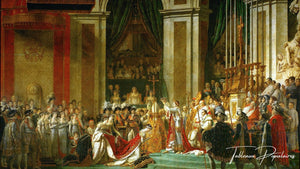
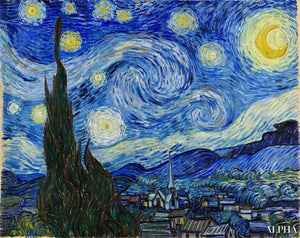
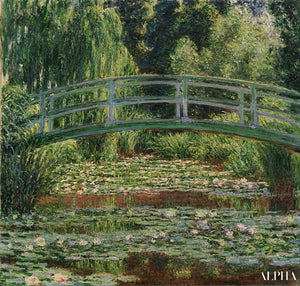
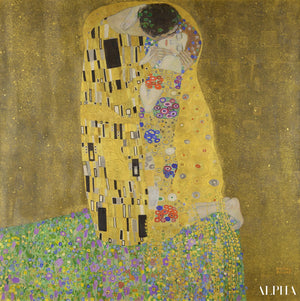
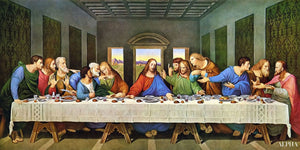

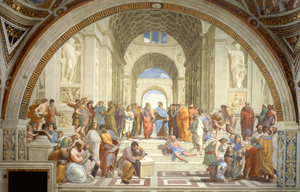
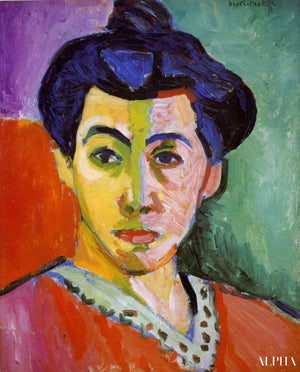
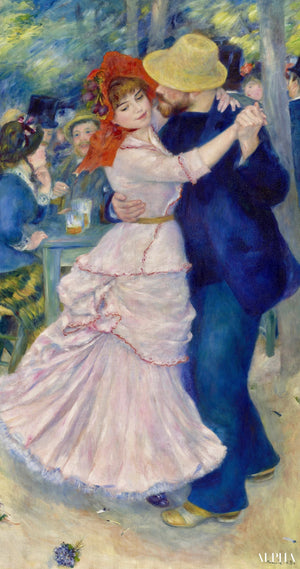

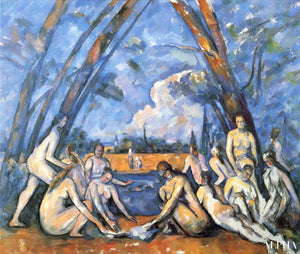
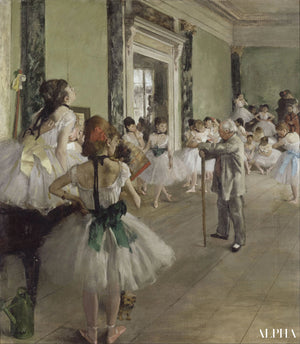
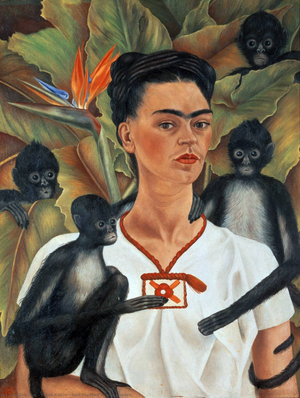

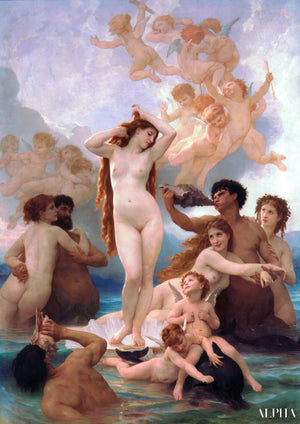
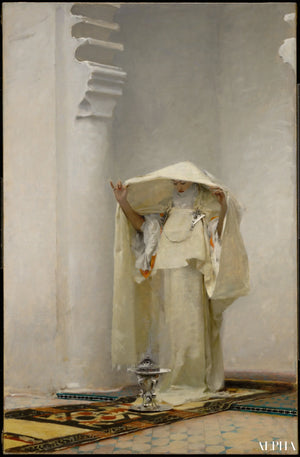



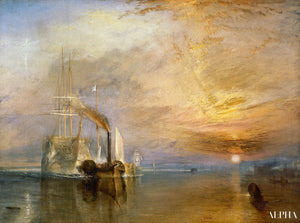








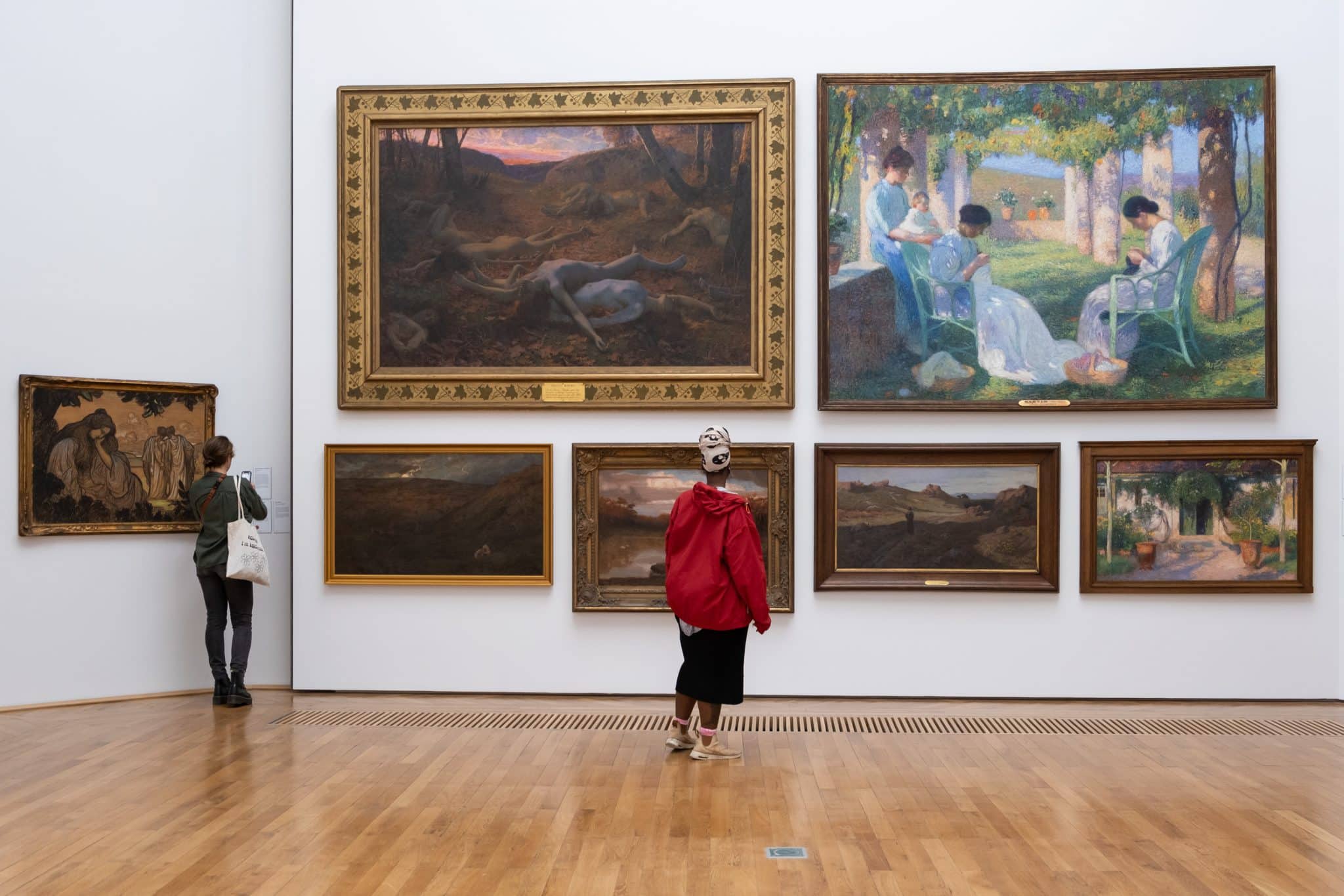
0 comments